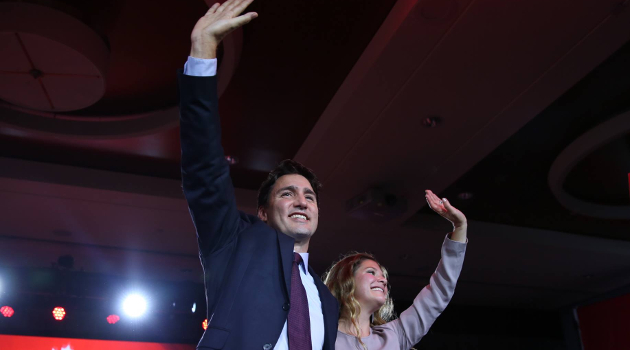Back in 2011, CF&P released this video citing four nations – Canada, Ireland, Slovakia, and New Zealand – that achieved very good results with multi-year periods of genuine spending restraint.
Today, let’s focus on what’s been happening with government spending in Canada.
As explained in the video, America’s northern neighbor enjoyed a five-year period in the 1990s when government spending increased by an average of just 1 percent annually, with most of that progress occurring when the Liberal Party was in charge.
 This fiscal probity – an example of my Golden Rule before I even invented the concept – paid big dividends.
This fiscal probity – an example of my Golden Rule before I even invented the concept – paid big dividends.
The overall burden of government spending, measured as a share of economic output, declined substantially.
And because Canadian lawmakers dealt with the underlying problem of too much spending, that automatically solved the symptom of red ink.
That’s the good news.
The bad news is that Canada’s current prime minister, Justin Trudeau, has been spending a lot of money.
Jon Hartley, in an article for National Review, looks at his fiscal policy.
In June, Fitch downgraded Canada’s sovereign debt, revoking its prized AAA status. …Canadian finance minister Bill Morneau recently revealed that Canada’s projected 2020 deficit is now C$343 billion, a whopping 16 percent of GDP. …The Trudeau government now finds itself in a quandary over how to get to grips with its increased government spending.
…This won’t be the first time that Canada has had to wrestle with its federal debt… Perhaps unsurprisingly, there has been speculation that the Trudeau government is now looking to institute a controversial federal housing-equity tax on primary residences… Canada now has high middle-class tax rates and, if federal and provincial taxes are combined, a top marginal tax rate of over 53 percent in the most populous province, Ontario. …Simply printing money to pay for Canadian sovereign debt is probably not on the cards either. …What’s lacking for now is any obvious policy path to return the country to economic normality and restore a semblance of control to the nation’s finances.
This is helpful analysis, especially when thinking about how Canada will try to climb back out of the fiscal hole caused by the coronavirus.
But I think it’s more revealing to see Trudeau’s track record before the virus.
So I went to the database for the IMF’s World Economic Outlook, which was released late last year before the disease wreaked havoc with government finances.
Here’s the data showing the spending burden has grown almost twice as fast under Trudeau (2016-2020) as it did in the previous five years (2011-2015).
Since Canada has a federal system, this data includes spending increases by sub-national governments. So it’s not clear how much Trudeau should be blamed compared to his predecessor.
But surely we can conclude that fiscal policy has deteriorated during his reign.
Also, the IMF data for the Trudeau years is preliminary. But since we want to see what was happening before the coronavirus, these numbers are actually the ones we want to use.
The bottom line is that Canada was moving in the wrong direction before the coronavirus and the spending burden has jumped dramatically since the disease hit.
This does not bode well for Canada’s long-run economic health.
P.S. Notwithstanding fiscal deterioration under Trudeau, Canada is still a surprisingly pro-market country, ranked #8 in the world. Moreover, it has some very sensible policies involving school choice, welfare reform, corporate tax reform, bank bailouts, regulatory budgeting, the tax treatment of saving, and privatization of air traffic control.
P.P.S. Here’s my early assessment (from 2016) of Trudeau’s agenda, and here’s what I wrote last year about his misguided tax policy.
———
Image credit: Renegade98 | CC BY-SA 2.0.


